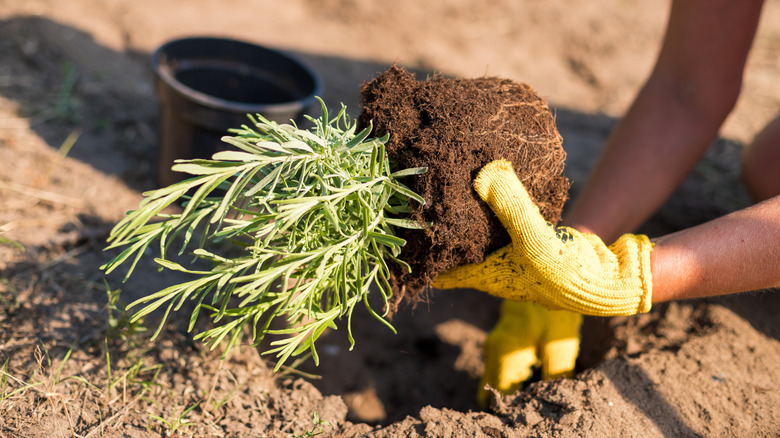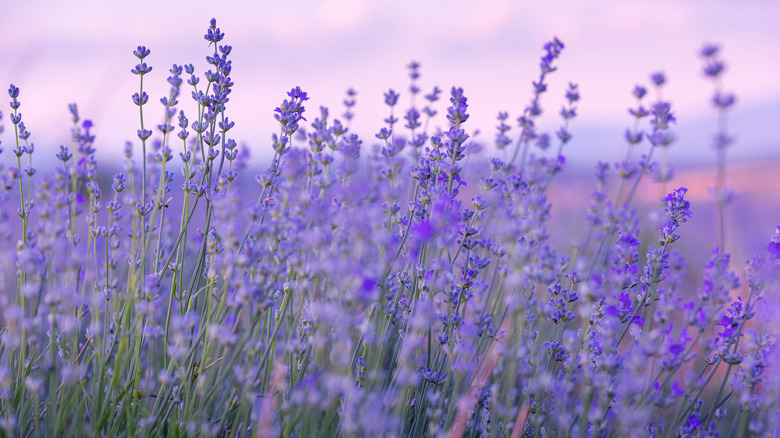Encourage More Blooms On Your Lavender Plants With One Simple Addition To The Soil
We may receive a commission on purchases made from links.
There are lots of creative ways to incorporate lavender (Lavandula spp.) into your landscape and enjoy its fragrant purple blossoms. Whether you grow it in a flower bed, a container, or somewhere else, make sure to give it the type of soil it likes best. Unlike many other plants, lavender protests when its growing site is packed with vitamins and minerals. It shows its displeasure by producing fewer flowers. You can prevent this problem by mixing gravel into the soil.
Gravel also makes an ideal mulch for lavender because it drains excess water so well. Lavender does not like to be soggy, which promotes root rot. Some of the gravel you use to mulch around your plants should eventually make its way into the soil. As an added bonus, an attractive garden addition that will keep squirrels out of your beds.
In addition to lowering the nutrient concentration of your lavender's environment, adding a scoop of gravel to the soil helps air move through it. Aim for a mix that about 30% gravel and 70% soil or compost. Good underground airflow gives plant roots the oxygen they need and facilitates their efforts to branch out. If you don't have gravel at hand, amending the soil with coarse sand will yield similar results.
Other ways to facilitate flowering when caring for lavender
If adding gravel to your lavender's existing home isn't feasible, try transferring the plant to a spot that offers more favorable growing conditions. This is likely to improve its flower output. If you don't live in lavender's outdoor growing range — USDA hardiness zones 5 through 9 — plant it in a container filled with sandy soil or a potting mix designed for succulents. This way, you can bring your lavender indoors as needed.
Also make sure your soil's pH level is in the range lavender prefers: 6.5 to 8.0. A product such as the Leaping Lynx 100-strip pH test kit can help you determine if this level needs adjusting. If your lavender's pH level is off, it may struggle to take in nutrients. This can lead to growth problems, including lackluster flowering.
If you're moving your lavender to a different in-ground location, make sure it's in a relatively sunny spot. Though lavender will tolerate partial shade, it performs best when it gets several hours of daily direct sunlight and a shady break during the hottest part of the afternoon.The best spots to plant lavender also tend to have good air circulation. This helps these perennials remain comfortably dry. When your lavender is healthy and happy, it's likely to reward you with an abundance of flowers.

